|
Puerto Rican Tody Todus mexicanus San Pedrito de Puerto Rico
|
 |
|
Photo: A. Sánchez
|
|
Puerto Rican Tody Todus mexicanus San Pedrito de Puerto Rico
|
 |
|
Photo: A. Sánchez
|
|
IDENTIFICATION: A tiny, brightly-colored forest bird with a short tail, emerald green upperparts, and a bright red throat and lower bill. The sides are washed with yellow. Males have gray eyes, while females have white eyes. Length: 11 cm.; weight: 5-6 g. VOICE: The common call is an insect-like, "pree" note. Audio 4 (D. Diefik, M. Oberle). It sometimes snaps its wings when it takes off. HABITAT: All forest types with dense thickets and vines, as long as there are earthen banks or road cuts for nesting. HABITS: Sits quietly, with its bill tilted up, as it rapidly scans the forest understory for insect prey. It sits so still that it is often hard to see despite its bright colors. Suddenly it will fly up to grab an insect off the underside of a leaf or branch, and then land on a new perch. Less commonly it catches flying insects. The Tody eats insects, including katydids, grasshoppers, crickets, earwigs, dragonflies, flies (Diptera), and beetles (Coleoptera), as well as spiders, and occasional small lizards and fruits. When excited, the Tody bobs its body up and down. Average territory size in lowland forest is 0.7 hectares (1.8 acres), compared to two hectares per pair at higher elevations where insect prey is less abundant. The breeding behavior of the Tody is unusual among Puerto Rican birds. Every year, each pair digs a narrow, 25-35 cm.-long burrow with a right angle, in an earth bank over an eight-week period, typically between February and May. The female lays 2-4 white eggs. Each egg is equivalent to one quarter of the body weight of the female: more than twice as heavy, proportionately, as in most other bird species. The Tody can lower its body temperature by up to 11 degrees Centigrade to conserve heat during cold weather, especially when breeding. Both sexes incubate the eggs over a period of about 21 days. Sometimes todies other than the parents assist in incubation and raising the young. STATUS AND CONSERVATION: A common forest species, but suffers from nest predation by the introduced mongoose. In historical times, humans captured them for food. RANGE: The Puerto Rican Tody is endemic to Puerto Rico. Regular locations to find the Puerto Rican Tody are along the trails in El Yunque, Guánica State Forest and other forest reserves. TAXONOMY: CORACIIFORMES; TODIDAE. The Tody family, Todidae, is endemic to the Greater Antilles and is thought to have evolved 6-7 million years ago. Four other tody species are endemic to other islands: Jamaica (Jamaican Tody, Todus todus), Cuba (Cuban Tody, Todus multicolor), and Hispaniola (Narrow-billed Tody, Todus angustirostris, and Broad-billed Tody, Todus subulatus). |
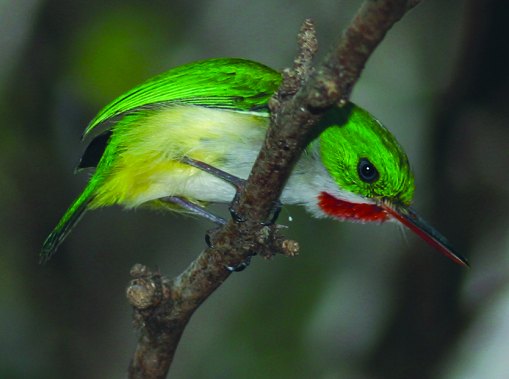 |
|
Photo: A. Sánchez
|
 |
|
Photo: G. Beaton
|
 |
|
Photo: A. Sánchez Muñoz
|
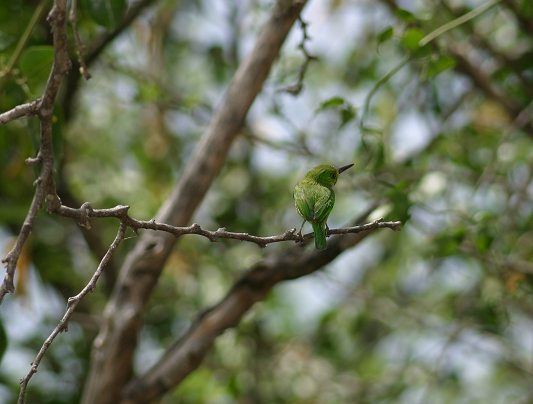 |
|
Photo: A. Sánchez Muñoz
|
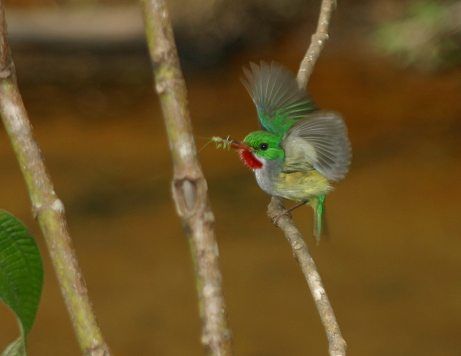 |
|
Photo: A. Sánchez Muñoz
|
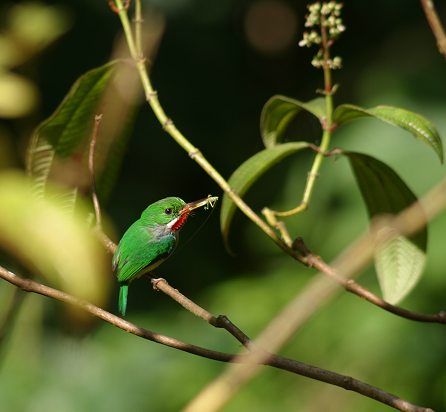 |
|
Photo: A. Sánchez Muñoz
|
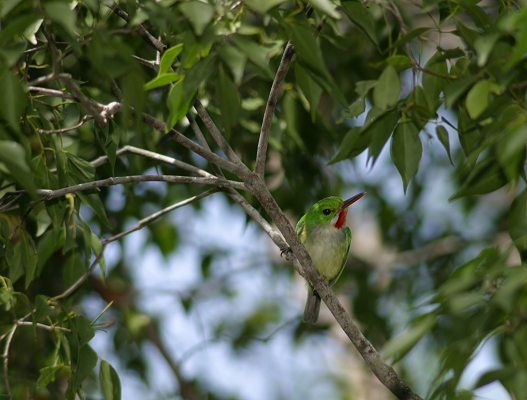 |
|
Photo: A. Sánchez Muñoz
|
 |
|
|
Photo: G. Beaton
|
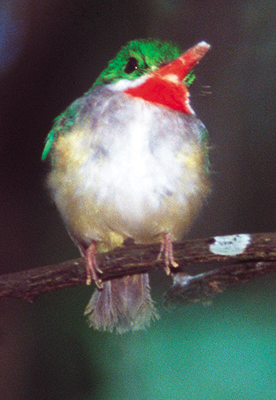 |
|
|
Photo: L. Miranda
|
 |
|
|
Photo: L. Miranda
|
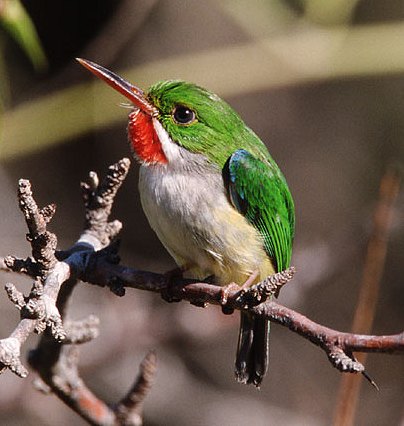 |
|
Photo: E. Fernández
|
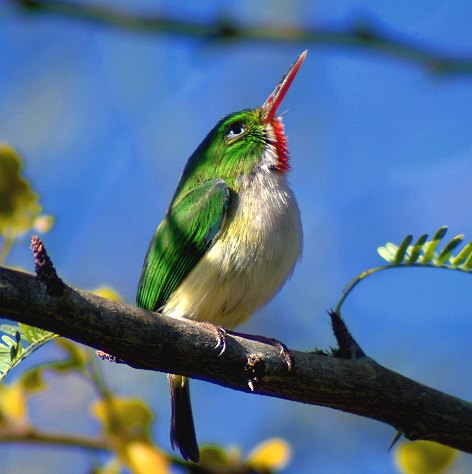 |
|
Photo: R. Rodríguez Mojica
|
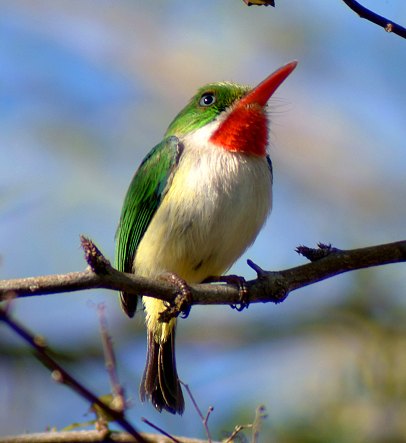 |
|
Photo: R. Rodríguez Mojica
|
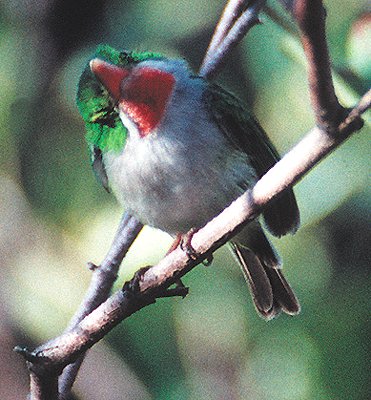 |
|
|
Photo: G. Beaton
|
 |
|
|
Photo: C. Ruiz*
|
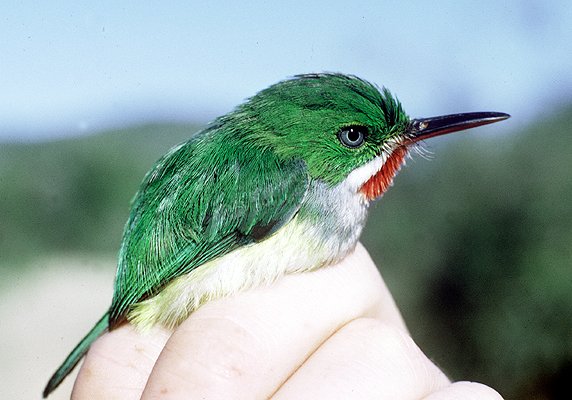 |
|
|
Photo: J. Faaborg*
|
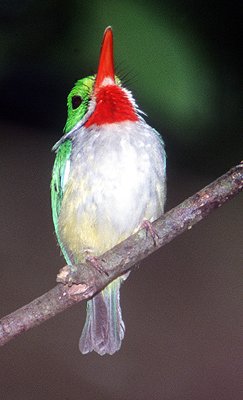 |
|
|
Photo: G. Beaton
|
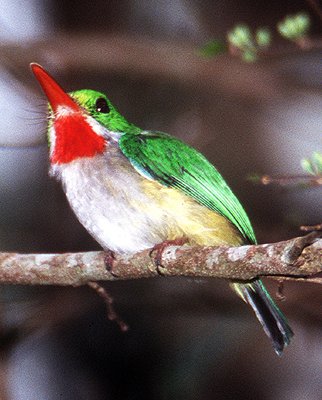 |
|
|
Photo: G. Beaton
|
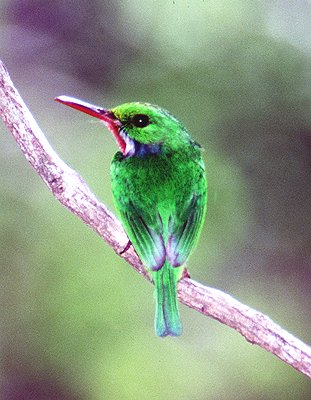 |
|
|
Photo: G. Beaton
|
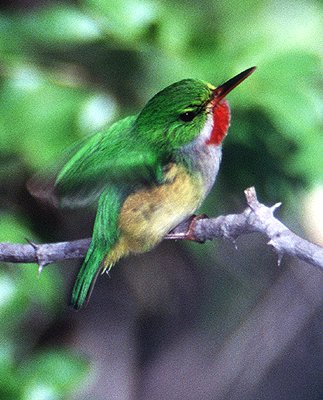 |
|
|
Photo: G. Beaton
|
 |
|
|
Photo: G. Beaton
|
 |
|
|
Photo: G. Beaton
|
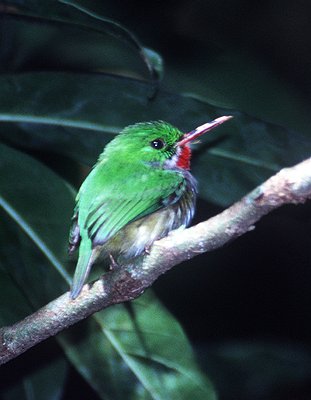 |
|
|
Photo: G. Beaton
|
 |
|
|
Photo: M. Oberle
|
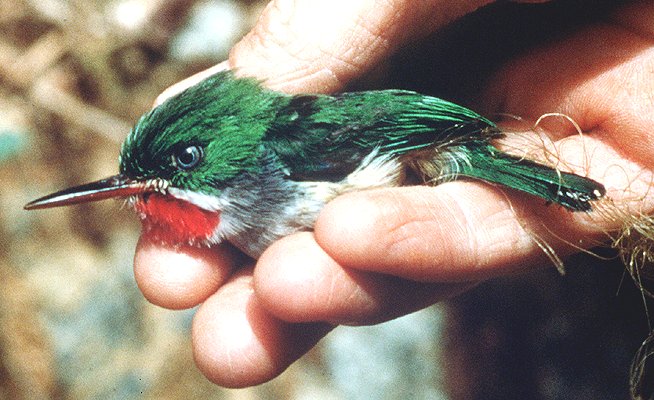 |
|
|
Female - Photo: C. Kepler*
|
|
References Cruz, A. and C. A. Delannoy. 1984. Ecology of the Elfin Woods Warbler (Dendroica angelae) I. Distribution, habitat usage, and population densities. Carib. J. Sci. 20:89-96. Cruz, A. and C. A. Delannoy. 1984. Ecology of the Elfin Woods Warbler (Dendroica angelae) II. Feeding ecology of the Elfin Woods Warbler and associated insectivorous birds in Puerto Rico. Carib. J. Sci. 20:153-162. Cruz, A. 1987. Avian community organization in a mahogany plantation on a Neotropical island. Carib. J. Sci. 23:286-296. Hernández Machado, B. 1999. Efecto a corto plazo del Huracán Georges en el comportamiento de forrageo del San Pedrito. El Bien-te-veo 2(3):2-3. Kepler, A.K. 1977. Comparative study of the Todies (Todidae): with emphasis on the Puerto Rican Tody (Todus mexicanus). Nuttall Ornithology Club #16. Cambridge, MA. Kepler, A.K. 2001. Order Coraciiformes, Family Todidae (Todies) in del Hoyo, J., A. Elliott, and J. Sargatal, eds. Handbook of Birds of the World, Vol. 6. Mousebirds to hornbills. Lynx Edicions, Barcelona. Merola, M. 1995. Fruit in the diet of nestlings of the Puerto Rican Tody, a tropical insectivore. Wilson Bull. 107:181-182. Merola-Zwartjes, M. and J. D. Ligon. 2000. Ecological energetics of the Puerto Rican Tody: heterothermy, torpor, and intra-island variation. Ecology 81:990-1003. Pérez-Rivera, R. A. and E. N. Dechoudens. 1996. Use of bird nests by Eleutherodactylus frogs in the Carite forest, Puerto Rico. Carib. J. Sci. 32:201-205. Raffaele, H.A. 1989. A guide to the birds of Puerto Rico and the Virgin Islands. Princeton. Raffaele, H.A. 1989. Una guía a las aves de Puerto Rico y las Islas Vírgenes. Publishing Resources, Inc., Santurce, PR. Raffaele, H.A., J.W. Wiley, O.H. Garrido, A.R. Keith, and J.I. Raffaele. 1998. Guide to the birds of the West Indies. Princeton. Rickelfs, R.E. and E. Bermingham. 1997. Molecular phylogenetics and conservation of Caribbean birds. El Pitirre 10(3):85-92. Wunderle, J.M., A. Díaz, L. Velasquez, and R. Scharrón. 1987. Forest openings and the distribution of understory birds in a Puerto Rican rainforest. Wilson Bull. 99:22-37. Puerto Rican Tody, Spanish text Next related species in taxonomic order Previous related species in taxonomic order |